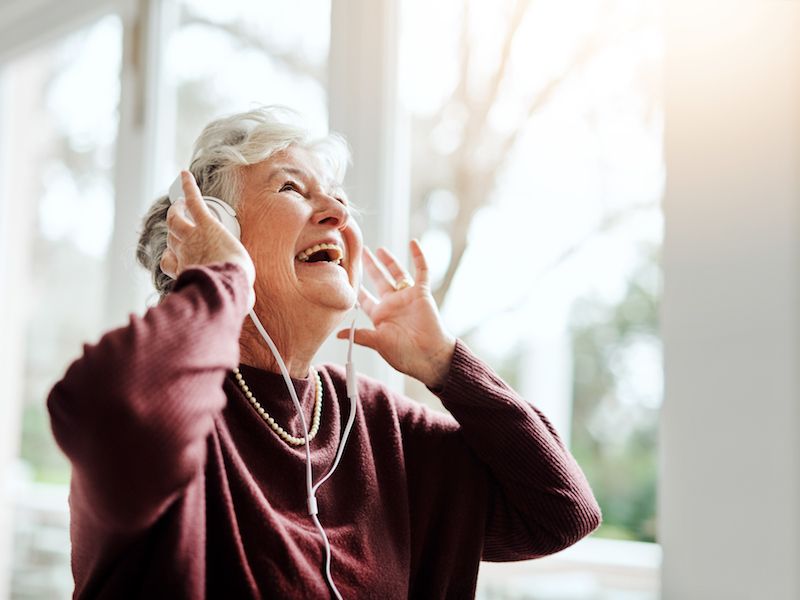
Noise-related hearing loss doesn’t just impact individuals who work in loud settings, such as construction workers or heavy metal roadies. Leisure associated noise exposure can be just as damaging as work related noise exposure. The most prevalent type? Music, gaming, streaming video or anything else that you would listen to through headphones or earbuds.
You might be alarmed to find out that a mobile device can go that loud. But these devices can reach continuous volumes of over 105 dB, which is around the average human threshold for pain. This is the volume at which noise begins to literally cause pain in your ears. So what can you do to safeguard against this type of noise-related loss of hearing?
The volume level here is significant. An easy shorthand that’s widely suggested is the 60/60 rule: Listen with the volume at or below 60% for 60 minutes or less in a single session (because the length of sound exposure matters, too).
Your Hearing Aids Can be Set up For Music
Make certain, if you’re using hearing aids, you don’t try to drown out other noises by cranking your streaming music up too high. In addition, consult us about how to best listen to music. Hearing aids aren’t created to make music clearer like they do with voices so if you’re really into music, you might have noticed this. We may be able to change the configuration to reduce feedback and noise while maximizing some frequency to better the quality of sound when listening to music.
How to Pick The Best Headphones
When purchasing headphones there are many choices, especially if you use hearing aids. It might be a matter of personal choice, but there are some things you will want to consider there too.
Headphones That go Over The Ears
Over the ear headphones are becoming popular again but you probably won’t see the old foam covered ear pieces that once came with a walkman. They have a lot of options in color and style, are often endorsed by celebrities, and can be unexpectedly pricey. And unlike those little foam pads, these cover the entire ear, stopping outside noises.
Conventional wisdom is that these are safer than in-ear headphones because the source of the sound is further from your eardrum. But the truth is they’re usually capable of much louder sound than their smaller kin, the speakers are much larger. Noise cancellation can be a helpful thing as long as you’re not missing important sounds such as an oncoming automobile. But on the positive side, you won’t need to compete with outside sound so you can listen to your music at lower levels.
Earbuds
The normal earbuds that are included with devices like iPhones are much maligned for their inferior quality of sound, but because they come with your phone many people still use them. Plus, with newer models that don’t have a headphone jack, sticking with Apple’s earbuds can just be easier.
The downside, in addition to the inferior sound quality, is that basic earbuds don’t cancel outside sounds, so that it’s more likely that you will crank up the sound level. Once again,, though it’s commonly said that earbuds are a problem because you stick them into your ear so their speakers are really close to your eardrum, volume is the biggest concern.
Noise Blocking Earbuds
More comfortable than regular earbuds, models with a round rubber tip are the choice of many people because they help stop outside noise. The rubber conforms to the shape of your ear, creating a seal that blocks other noises from getting in. But these earbuds can also block out sounds you need to hear and volume is still the biggest problem. Obviously, these won’t work for you if you wear hearing aids.
Several pairs may have to be evaluated before you find headphones that do the job. Your expectations, acoustically, will vary depending on what kind of use you usually give them. Enjoying your music at a safe volume and finding headphones that assist you in doing that is essential.
Don’t Cut Corners When it Comes to Your Hearing
Is it Safe, How Can I be Sure? If you own a smartphone, you can get an app for that, you can download the National Institute for Occupational Safety and Health’s free Sound Level Meter app. There are different apps out there, but research has discovered that the dependability of these other apps is spotty (in addition, for whatever reason, Android-based apps have been shown less precise). That motivated NIOSH to create their own app. You can measure outside sounds with the app, but you can also measure the sound coming from your device’s speakers, essentially, the true volume of what’s going to your ears. You have to do a little work, but taking these kinds of preventative steps can help protect your ears.
